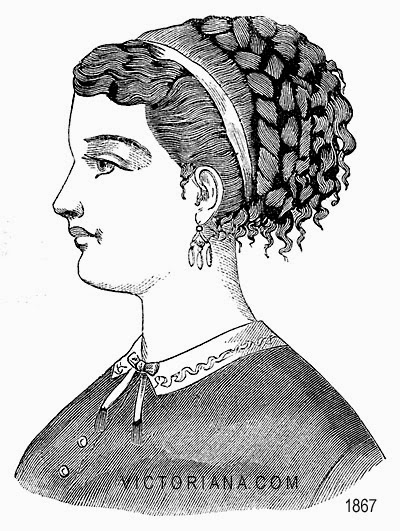Gothic novels are a particular type of literature that arose from the period of 1790 to the 1800's, and has many particular conventions that make them easily recognisable. They contain particular themes, characters and situations that set them aside from the generic genres of literature. Here are some indicators of Gothic fiction:
Setting
In gothic novels, the setting tends to be places that invoke fear and are scary and decrepit, which usually have the purpose of depicting the bigger picture of the world that the novel is set in. For example in Great Expectations, Miss Havisham's house is a mass decaying structure. This can mirror the historical context of the period that the author, Charles Dickens, lived in. The Victorian era was notorious for social class disparities and chaos among the capital of London, this is even shown in the 2012 film 'Great Expectations' when Pip first enters the city and can barely walk amongst the hustle and bustle. Moreover, Miss Havisham lives in the country, where rural-urban migration was occurring and so masses of people moved to the cities in search of work. Her house can represent the loss of population in the countryside regions of the UK. Moreover, the french revolution is a factor that changed England as they knew it, which could also be a factor that influenced the house of Miss Havisham.
Power
'The Gothic' is absolutely fascinated with the supernatural and its power. This is a strong convention seen in gothic literature which can focus on powerful supernatural figures e.g. Satan, or it can focus on the other end of the spectrum where people are vulnerable and defenceless. It delves into what it takes to be a human, and particularly what tests humans. This includes the strength of desire, whether it be from an internal or external source, and influences that make a person to act unusually. Moreover, in terms of women, it explores their vulnerability and lack of power, or their accelerated desires for something. In terms of Great Expectations, this can again be shown through Miss Havisham and also Estella. Miss Havisham has lost her fortune and been left at the altar, and because of the rife patriarchy during those days, she is in too high of a class to be looking for work or asking for help. Moreover, her hatred has driven a desire for power above men using her daughter, Estella, to ruin a man's life as revenge. This is comparable to devilish acts, which may also relate to the supernatural.
Sexual Power
There are many taboo topics that are addressed for entertainment in gothic fiction. These include:
- Perverseness
- Incest
- Same sex desire
- Violence
- Abduction
- Rape
- Sexual power- males that are unable to control their desires
The Uncanny
The Uncanny is described by Sigmund Freud as an event or person introduced to us that we have not encountered before, but reminds us of something we have experienced or someone we know or have seen. It can also represent the archaic past of our world. We can even begin to recognise inhuman figures. In terms of the gothic, it can make us frightened and afraid, and can be closely compared with deja-vu.
I believe in Great Expectations, Miss Havisham relates to the uncanny in the way that she is the old, alarmingly timeworn, ghoulish version of her past self. The reader can imagine the happiness and glow of her past self pre-wedding, which is now nestled inside the rotting but living corpse of Miss Havisham. She is not yet dead but may as well be.
The Sublime
The sublime is being fascinated with the power of nature and power. Big events that cause the character or the reader to feel awe or anxiety or even exciting will be caused by events that are a result of something that is powerful or maybe beautiful.
The Supernatural and the Real
The supernatural was a phenomenon that really interested those in the Victorian era, which is why gothic literature was so popular. However, it may not always have occurred as a result of something that was not legitimate. For example in Ann Radcliffe's 'The Mysteries of Udolpho', there appeared to be ghosts at the start of the story, however at the end it is explained that all these paradoxes have happened as a result of nature rather than the supernatural. Therefore there are two types of supernatural when it comes to gothic fiction; the genuine supernatural and the supernatural that has a natural explanation.
Grotesque in Great Expectations
'Grotesque' is stereotypically known as a definition for something gory, however in terms of literature it is when a normal being such as a human or animal is changed to the extent that their behaviour is creepy, unearthly or humorous. Again, Miss Havisham is the epitome of grotesque in Great Expectations. She is a walking cadaver that has accelerated forms of emotion, particularly hate, and all aspects of her life are exaggerated for entertainment in the form of grotesque. Hardly ever in real life would you come across a woman that resembles a ghost or the walking dead, and so she was created by Dickens for gothic effect.
References
http://cai.ucdavis.edu/waters-sites/gothicnovel/155breport.html
http://www.sparknotes.com/lit/greatex/context.html
http://www.jessicatiffin.org/victorian-gothic/gothic-literature/
http://earth.subetha.dk/~eek/museum/auc/marvin/www/library/uni/projects/gothnov.htm
https://www.youtube.com/watch?v=gNohDegnaOQ
http://www.saylor.org/site/wp-content/uploads/2012/05/engl403-1.3.1-A-Glossary-of-Literary-Gothic-Terms.pdf

























